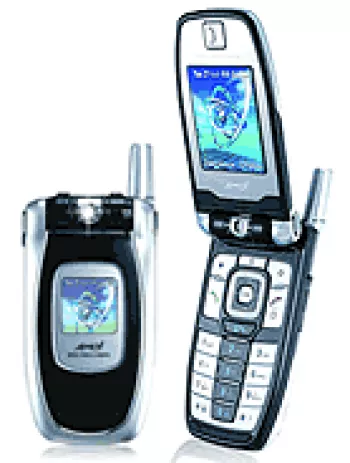
Introduction to Amoi S6
In the early 2000s, feature phones were still the norm, with manufacturers focusing on basic functionalities. The Amoi S6 was released in 2003, marking its place in the history of mobile devices. Known for its basic yet practical design, the Amoi S6 catered to users seeking simplicity and practicality in a mobile phone.
Network Specifications
The Amoi S6 was equipped with GSM technology, supporting 2G bands GSM 900 / 1800 / 1900. It featured GPRS Class 10 for data transfer. However, it did not support EDGE, limiting its data capabilities compared to later smartphones. The focus on GSM technology was typical for phones during this period, making it a reliable choice for basic voice and text communication.
Launch and Discontinuation
Announced in 2003, the Amoi S6 was eventually discontinued, like many feature phones of its time. The initial launch was aimed at capturing a market segment that required essential phone functionalities without the complexities of modern smartphones.
Body and Design
The Amoi S6 featured compact dimensions of 91.5 x 44 x 21 mm, and a lightweight build of 80 g. It utilized a Mini-SIM card, maintaining compatibility with the common standard at that time. The phone's dimensions and weight made it easy to carry, which was a desirable trait for many users.
Display
With an OLED grayscale display showcasing 16 shades, the Amoi S6 featured a resolution of 128 x 128 pixels. Although basic by today’s standards, this provided clear visibility for text and simple graphics, suitable for the essential functionalities it offered.
Memory
The device supported a phonebook capacity of 200 entries with additional 8 fields per contact. It could store call records for 10 dialed, 10 received, and 10 missed calls. There was no memory card slot available, which was typical for devices of this era, where external storage was not widely used.
Camera and Multimedia Features
The Amoi S6 did not feature a camera, which aligns with its design as a basic phone focused on essential functionalities. The device supported 40 polyphonic ringtones but lacked a loudspeaker and 3.5mm audio jack, highlighting its focus on simplicity.
Communication and Connectivity
For communications, the Amoi S6 supported SMS and Email, which were becoming standard for phones at the time. It included a WAP 1.2.1 browser for minimal internet browsing. However, it did not support Bluetooth, WLAN, GPS, or FM radio, emphasizing its role as a basic communication tool rather than a multimedia device.
Other Features
In terms of entertainment, the device came preloaded with 6 games, serving as a minor diversion. The phone did not support Java, limiting the potential for third-party applications.
Battery Life
Powered by a removable Li-Ion 860 mAh battery, the Amoi S6 could last up to 100 hours on standby and 3 hours of talk time. This demonstrated an average battery life typical for feature phones, focusing on longevity rather than performance.
Conclusion
The Amoi S6 exemplifies a time when phones were transitioning from basic communication devices to more multimedia-capable tools. With its focus on essential functionality, compact design, and reliable network capabilities, it remains a reminder of the simplicity that characterized the earlier era of mobile phones.
Key Features of Amoi S6
- Compact dimensions of 91.5 x 44 x 21 mm and a lightweight design at 80 g.
- 16 shades OLED grayscale display with a resolution of 128 x 128 pixels.
- Capability to store 200 contacts in the phonebook with 8 fields each.
- Supports polyphonic ringtones with 40 voices.
- Includes basic messaging options like SMS and Email.
- Offers 6 built-in games for entertainment.
- Removable Li-Ion 860 mAh battery with up to 100 hours standby time and 3 hours talk time.
Amoi S6 Key Disadvantages
- Only supports 2G GSM technology; lacks modern 3G or 4G connectivity.
- No EDGE support for faster data connectivity.
- The display is limited to grayscale (16 shades) OLED, which is outdated.
- Does not support external memory card slot, limiting storage capacity.
- No camera feature available.
- Missing loudspeaker functionality.
- Lacks a 3.5mm audio jack for headphones.
- No Bluetooth or WLAN connectivity options for wireless data transfer.
- Does not have GPS or radio functionality.
- Basic WAP 1.2.1 browser with limited Internet capabilities.
- Java applications are not supported.
- Short talk time of up to 3 hours and stand-by time of up to 100 hours with the provided battery.
- The device was announced in 2003 and is discontinued, making it obsolete.

View Also
More Phones
All Rights Reserved +13675 Phones © Mobilawy 2025

























